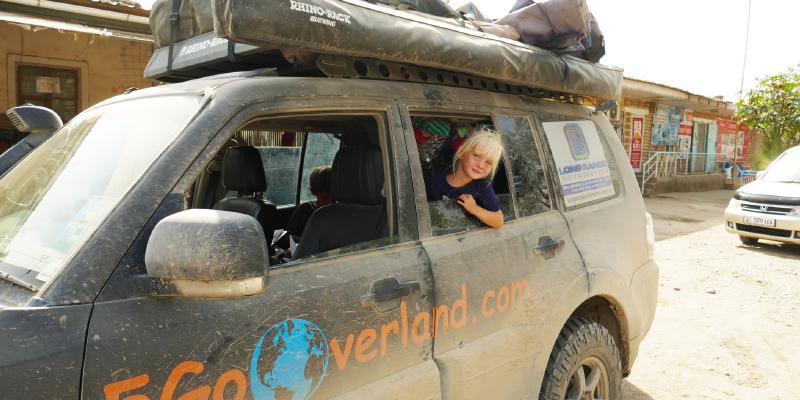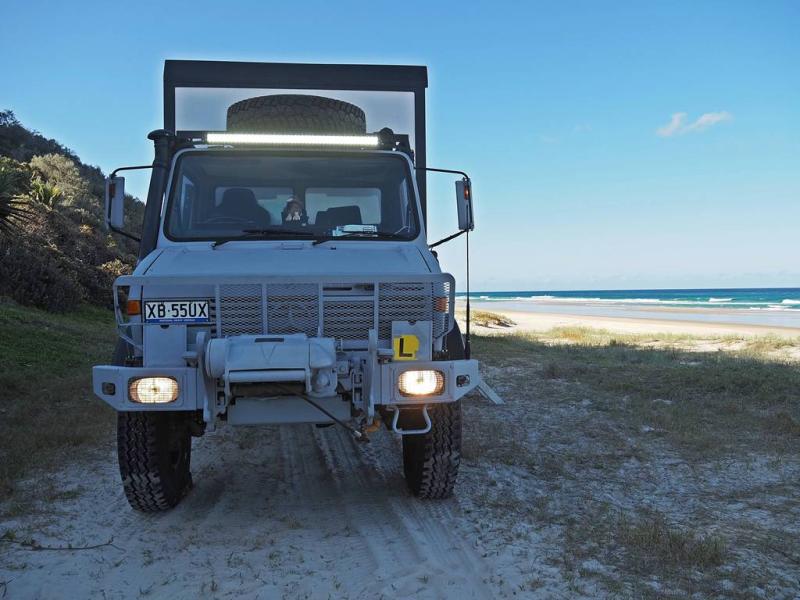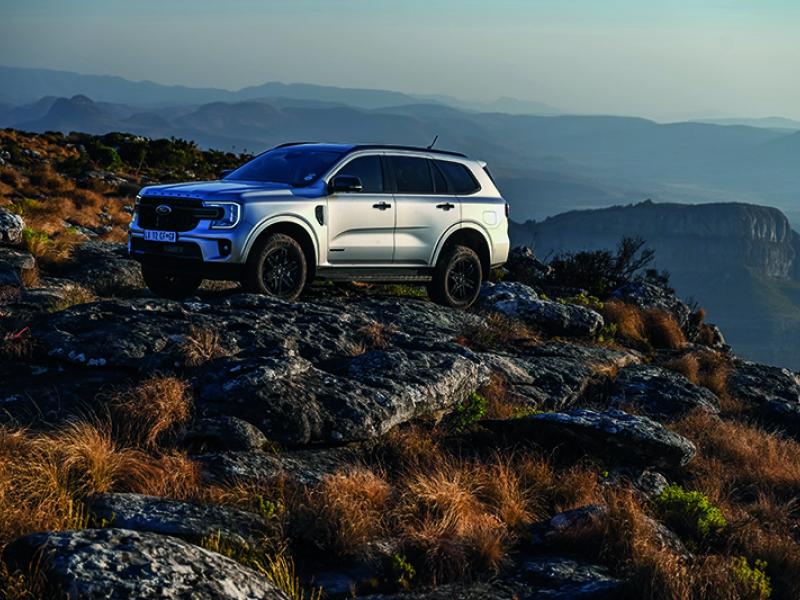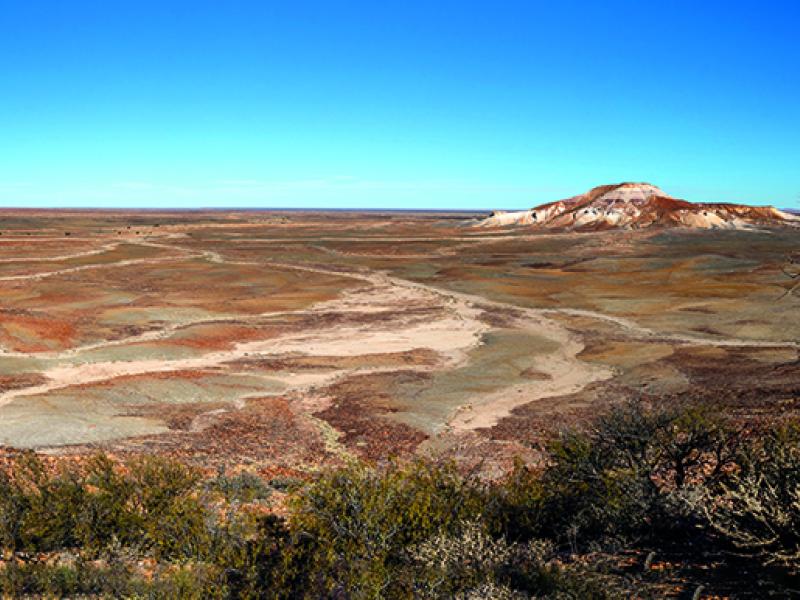Central Asia offers up some fascinating cities that are very different from those we are used to at home in New Zealand, or in other developed countries. Overlander extraordinaire Aaron Rich explains why.
This article was written from back home in New Zealand, while participating in the coronavirus lockdown.
We arrived home five weeks before the lockdown commenced, at a time when there was still only limited visibility of what was about to grip the world. And equally before it would fully dawn on me just how fortunately timed our 10-month long Russia and Central Asia to England expedition really was. We did not cut our trip short – there was no need as we had successfully reached our planned end point of England by early February.
However, this is not to say there weren’t other kinds of serious difficulties to overcome along the way, particularly nearer the end of our journey, which you can read about in upcoming editions. But I shudder to think where we’d be now had we been attempting this overland journey this year, with borders shutting down all around us!
I sometimes hear concerns expressed by family members, or followers, who worry about our safety in some of the countries we pass through. Mostly it’s the case that they really needn’t worry, as they simply have no idea how lovely and helpful local people typically are across Russia and Central Asia. I absolutely love having these sorts of adventures with my family and am equally passionate about returning home to tell our tales.
My last two articles came from Tajikistan’s high Pamirs, where local people live with seemingly negligible resources and survive on extremely low incomes by world standards. You may recall the Wakhan Valley family I featured in the April edition – I wonder how they’re getting on amidst the coronavirus saga? Quite possibly largely ordinarily! They grow their own crops in their manually ploughed fields and grow fruit in a little orchard above their mud-brick home. Their goats roam freely nearby. There appeared to be little they needed to source from a local market.
Devlatsho may have paused doing ad hoc building work, although that income was largely for savings, as the family has no rent/mortgage or even utilities to pay on their homemade house. Heating and cooking is powered by the freely available and surprisingly effective fuel source of the Pamirs – cattle dung.
Local Tajik and Afghan people may appear to have little from a Western perspective, but equally they need so little that they don’t provide for themselves. They live far more in balance with nature than people tend to in developed countries, and at a time like this that may be to their advantage in some respects. Either way, I feel quite certain that they did not rush to the local market to stockpile toilet paper!
Cities of Central Asia
On a long-term cross-continent 4WD adventure, exploring foreign cities is an equally fascinating part of the overlanding experience.
Regular readers will know that we’re often out solo navigating lengthy off-road sections, or remote areas where the infrastructure is poor.
Our longest continuous off-road section of the trip was 1,600 kilometres through Mongolia’s north west, which we needed to complete within 10 days due to restrictions imposed by Mongolian Immigration Police – that fascinating route is detailed on my
web blog.
I can tell you that as much as we love those rough and remote sections, after some time we look forward to a change of pace. Exploring a new city provides just that. Central Asian cities are certainly very different as we found out from direct experience.
We typically spent around a week or more exploring interesting new cities, where we would take full advantage of the opportunity to temporarily change accommodations from our tent to a guesthouse or rented apartment. Apartments are great, perhaps offering a more authentic local experience.
Tashkent – Uzbekistan’s Capital (Population 2.4 million)
One should not underestimate the significance of the culinary delight ‘plov’ to Central Asia. Initially I don’t think I really got it myself and so failed to indulge on plov in Kyrgyzstan and Tajikistan. There I was preoccupied by the delicious shashlik – giant skewers of meat cooked over coals and typically served with sliced onion and bread – just awesome!
We were fortunate then that when we finally did succumb to plov we did so in Uzbekistan, where they claim to make the best plov in all of Central Asia! One of the wonderful things about foreign travel is indulging in the varying local cuisines. A meal of plov at a simple local Tashkent restaurant can be very cheap – served with bread and green tea it may only cost about NZ$4. But be warned, too much of that combination of rice, meat and oil could see your waistline expanding a bit too rapidly!
With a population of 2.4 million, Tashkent is the largest city we visited in Central Asia. Driving into Tashkent we quickly sensed the scale of the place. Not only is it much bigger than Tajikistan’s capital Dushanbe, but it also feels more ‘real’ – an interesting blend of Central Asian chaos and Western aspirations.
It wasn’t essential for us to come to Tashkent in order to travel through Uzbekistan towards the Caspian Sea – I just wanted to include Tashkent and am pleased that we did. Although it’s a big city, Tashkent isn’t the tourist draw that the ancient silk road cities of Samarkand, Bhukara and Khiva (all coming up in future articles) are, which is actually a good thing.
In Tashkent foreigners can still walk into a restaurant, whether a formal one or just a simple stall at the market, and be treated broadly the same as locals. We subsequently found that some restaurants in the more heavily touristed parts of the ancient silk road cities offered inflated prices, and/or tiny portions.
So, Tashkent proved a great place to sample Uzbekistan’s traditional cuisine, not only paying accurate local prices, but also enjoying the same quality and taste that locals expect.
Although we visited Tashkent in early November, our seemingly never-ending autumn continued. Tashkent is known to swelter in extreme mid-summer temperatures, and whilst September/October would likely have been the most ideal time to visit, we were running much too far behind my original plan for that.
Fortunately, it turned out that early November remains a pleasant time to visit. Tashkent is a green city, full of large leafy city parks, and as such it was a pleasure to experience how it appears before the trees lose their leaves ahead of a bitter winter. I would love to return here in summer and would be prepared to endure the heat.
We attracted stares whenever we drove Tashkent’s streets, because there my tall black Pajero stood out more so than elsewhere. It would seem Uzbekistan has a thriving industry in assembling Chevrolet branded cars – almost entirely cheap compact models and nearly all painted white. Due to Government stipulations these Chevrolets represent pretty much the only choice in vehicles for the vast majority of Uzbek motorists, hence they dominate Uzbekistan’s roads.
Gas-guzzlers?
On a related theme it’s worth mentioning that nearly all local vehicles have been adapted to run on gas (LPG), this owing to Uzbekistan’s huge natural reserves of gas. This is a crucially important consideration for anyone on a vehicle-based expedition needing to travel right across Uzbekistan. I went in aware that other overland travellers had reported having great difficulty finding petrol or diesel once outside of Tashkent, but what I hadn’t expected was to find that even full-sized trucks operating in Uzbekistan also run on gas!
I had presumed that at least they would run on diesel and hoped to rely on this in a worst-case scenario should we find ourselves struggling to find diesel. Thus it became quickly apparent that when we were ready to move on from Tashkent, we would need to take an even more cautious approach to fuel management. Because, even with two full size fuel tanks fitted to the trusty Pajero, giving 170 litres of on-board capacity, this isn’t enough to traverse the whole of Uzbekistan. I’ll revisit this important consideration in upcoming editions, when we head out from Tashkent across Uzbekistan’s deserts.
Chorzu Bazaar
Chorzu Bazaar is one of Tashkent’s biggest and best. You can buy all sorts of fresh fruit and vegetables here, spices too. And just look at the huge indoor meat market – refrigerated too, which isn’t always a given across Central Asia.
To short term tourists, bazaars like these found across Central Asia are a novelty to visit. Whilst they still hold that appeal for us too, we increasingly found ourselves looking upon these markets as locals do – simply where the freshest meats, fruit, vegetables and more are to be found. We visited these markets as much to stock up the Pajero’s fridge and pantry as to sample the atmosphere of the place.
Tashkent’s Metro
In former Soviet Union times a city qualified for its own metro system once it reached a certain population size. For 41 years, from its opening in November 1977 through until June 2018, it was strictly forbidden to take photos of Tashkent’s metro. The many police present everywhere here would immediately descend on anyone who tried! This is another restriction recently lifted as Uzbekistan slowly eases up and attempts to attract tourism.
I would have thought it a great shame had I not been able to take photos. No two underground stations are the same and some rather artistic Soviet architecture was employed during the creation of Tashkent’s metro. I’ve only room for a couple of photos of stations here, but if you’d like to see more images then head over to the blog on my website. www.5gooverland.com/our-blog
Dushanbe – Tajikistan’s Capital (Population 750,000)
Wow... Dushanbe is one surprisingly grand little capital city! A visitor today would scarcely know that a brutal civil war ended here in 1997. Moreover, a visit to Dushanbe could almost impart an impression that Tajikistan is a wealthy country. But it’s not, as its meagre GDP per capita of just US$800 attests. This is also low relative to neighbours Kyrgyzstan and Uzbekistan, making Tajikistan the poorest of Central Asia’s ‘...stans’.
Nevertheless, Dushanbe manages to impress. Extensive beautifully maintained city parks overflowing with gardens and well-tended roses, magnificent buildings finished in marble, ornate lamp posts, etc. Grand hotels also abound, including a Hilton and a Hyatt Regency. Footpaths in the centre aren’t finished in mere concrete or asphalt, but paved in various kinds of tiles. Never mind that Dushanbe seemingly already has more than its fair share of grand buildings, as it is apparent that still more are under construction. Billboards outside construction sites illustrate just how lavish the upcoming batch will be.
And yet I found a feeling gradually crept in that all was not entirely what it seemed. Like something out of Disneyland, or Hollywood’s Universal Studios, it was as if at any moment I might turn a corner to find that the grand buildings were all facades with no substance behind. And just how does a poor country finance such opulence?
I believe the answer lies entrenched in Tajikistan’s complicated political situation. In every settlement we passed through in Tajikistan – even tiny remote villages in the Pamirs – countless posters of the country’s long serving president (since 1994) were to be seen adorning multiple buildings. Some of these posters are huge and can be seen from afar. You could easily see the President pictured 20 times just on passing through a tiny village, as if to remind locals who’s in charge.
A visit to the huge (though somewhat sparse) national history museum in Dushanbe reveals a section devoted to Tajikistan’s political history; there I learned that the President was recently awarded the title ‘Hero of Tajikistan’. A grand title no doubt; just one stop short of ‘Superhero’.
The story goes that Tajik people love their president. He is respected as the man responsible for ending Tajikistan’s civil war and bringing peace to a country that was war torn after the Soviet Union fell. Ushering in an era of peace is a stellar achievement no doubt, and today’s ‘Disneyland-like’ Dushanbe must be far removed from the Dushanbe of 1997, but equally Tajik people lack genuine choice in their political representation.
I’m not only picking on Tajikistan here. Simply put, Presidents (aka dictators) of Central Asian countries have generally had a bad habit of faking democracy. No one in the outside world is fooled by rigged elections, landslide victories winning 95 percent of the vote, or political parties with names containing the word ‘democratic’ without true substance.
Local people in a number of Central Asian countries have lived without much of what we take for granted – a genuinely free press, freedom of speech and assembly, religious freedoms, or even unrestricted access to the internet.
Tajikistan’s government is likened by some to being a family business, with the President’s son (presently Dushanbe’s Mayor) being groomed to eventually take over. As we progressed through Central Asia, alongside my great enjoyment of the stunning landscapes and fascinating cultures, I found myself growing increasingly aware of these past and prevailing political situations, including the matter of Government-led human rights abuses. Uzbekistan particularly gained notoriety a few years ago when it became known for boiling prisoners to death at a brutal facility located out in the desert; a facility that was only recently shut down. Many prisoners who have vanished into Uzbek jails – sometimes for a couple of decades – are guilty of no real crimes. Sadly, it hasn’t been all roses for everyone we share this world with, and for many it still isn’t.
Some of this might seem a bit heavy to include here… a reflection no less that this sort of overland world travel offers potential to broaden personal horizons and open one’s eyes to the realities of the world in which we live.
And yet notwithstanding any of this, nothing said herein should deter you from visiting Central Asia. As foreign tourists we’re generally safe and certainly very welcome. Most of these countries are now motivated to reverse former policies of keeping visitors out and are aware that their track records on human rights abuses are under international scrutiny.
I can assure you that now, or at least whenever the coronavirus situation settles, is almost certainly the best time there has ever been to be an overland tourist across Central Asia and I can’t recommend it highly enough!
Plan B!
It was with poor timing last month that I announced a possible new venture offering personally guided trips into Central Asia, commencing May 2021. This idea had evolved in favour of kitting out a pair of comfortable Land Cruisers, which would be located in Central Asia, from where they could be used to take participants on safe but much more adventurous routes than offered by most tour companies currently offering small group tours into
Central Asia.
The tours would likely be of three to four weeks duration. Most existing tour companies transport participants around on coaches. Yet anyone who’s been following my travels for a while will know that a 4WD is needed to access the most interesting and authentic parts of Central Asia, this given the existing poor infrastructure.
And just wait until you see some of the places we visited in Uzbekistan, which will feature in upcoming editions! But for now at least it’s better that my tourism idea be temporarily shelved due to the coronavirus situation. Nonetheless I would love to hear expressions of interest in these trips, for when it is safe to offer them.







